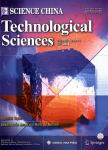Typhoon hazard assessment at the site-specific scale based on the probability density evolution method and its application on the southeast coast of China
Typhoon hazard assessment at the site-specific scale based on the probability density evolution method and its application on the southeast coast of China作者机构:Collegeof Civil EngineeringTongji UniversityShanghai 200092China
出 版 物:《Science China(Technological Sciences)》 (中国科学(技术科学英文版))
年 卷 期:2023年第66卷第1期
页 面:86-100页
核心收录:
学科分类:083002[工学-环境工程] 0830[工学-环境科学与工程(可授工学、理学、农学学位)] 08[工学] 0837[工学-安全科学与工程] 0706[理学-大气科学] 0714[理学-统计学(可授理学、经济学学位)] 0701[理学-数学] 0812[工学-计算机科学与技术(可授工学、理学学位)]
基 金:supported by the National Natural Science Foundation of China (Grant No. 51538010)
主 题:typhoon hazard Akaike information criterion Anderson-Darling distance boundary-layer wind field probability density evolution method
摘 要:Herein, a typhoon hazard assessment method at the site-specific scale is proposed. This method integrates the nonlinear threedimensional wind field model and the probability density evolution method. At the site-specific scale, the track of a typhoon near the engineering site is approximated via a straight line. The wind field model is utilized to calculate the wind speed at the surface given the gradient wind field at the top of the boundary layer. A comparison between the simulated and observed wind histories for Typhoon Hagupit that made landfall in Guangdong Province demonstrates the fidelity of the wind field model. The probability density evolution method is utilized to calculate the propagation of the randomness from the basic random variables toward the extremities of the typhoon surface wind. To model the probability distribution of the basic random variables, several candidate distributions are considered to fit the observations. Akaike information criterion and Anderson-Darling distance are used for selecting the preferred probability distribution model. The adequacy of the probability density evolution method in assessing typhoon hazards is verified by comparing the results with those generated by Monte Carlo simulations. The typhoon wind hazards estimated by the present study are compared with those proposed by other studies and the design code, and the differences are analyzed and discussed. The results of the proposed method provide the reasonable probabilistic model for the assessment of the structural reliability and the improvement of community resilience in the typhoon-prone areas.



